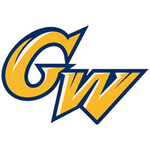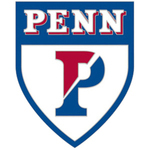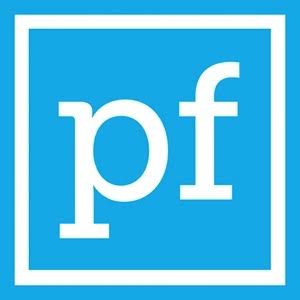George Washington University (GW)
Profile
Size
10 / 10Cost
10 / 10Selectivity
9 / 10-
Team Conference
MCLA Div. 1
-
College Type
4-year, Private non-profit
-
Campus Type

City: Large
Student Body
Gender
- Male
- Female
Enrollment
- Full Time
- Part Time
Geography
- In-State
- Out-of-state
- Foreign
- Other
Ethnicity
- White
- Black
- Asian
- Latino
- Foreign
- Other
Other includes American Indian, Native Alaskan, Native Hawaiian or other Pacific Islander, two or more races and unknown race / ethnicity.
Coach Recruiting Interview
Joe Opron is the Director of Lacrosse Operations at George Washington University. GWU’s MCLA program has been in great shape under Opron since their arrival to the MCLA. After being the team’s head coach for three seasons, and being the driving force behind the team’s successful bid to join the MCLA in 2013, Opron will step off the sideline and into the Director of Lacrosse Operations role. He will provide overall leadership and administrative support to the program and serve as a mentor for the players and coaches.
What is the best way for players to get on your recruiting radar?
Our Recruiting Coordinator, Nick Stensen, does a great job of getting out to as many recruiting camps as his schedule and our budget will allow. However, we are limited in the amount of players we get to see each summer, so it’s important that recruits provide a quality highlight film as early in the process as possible. Off the field, we look for excellent academic credentials and evidence of a sincere interest in George Washington University and Washington, DC. While we try to review and respond to all inquiries about the program, those that quickly demonstrate that the recruit has done his homework about GW will be rewarded with much more attention from our staff.
What type of player’s do you primarily look for, a raw athlete or refined lacrosse player?
There’s a place for both in every good program and both can contribute immediately at the MCLA level, so we primarily look for players who have a genuine passion for the sport. Our student-athletes aren’t on scholarship and don’t always have the same comforts afforded to NCAA Division I athletes, so to be successful, you have to love what you’re doing and love putting in the work to get better.
What areas of player development would you recommend players to focus on?
All players, whether they played at a top 25 high school or at a school far outside the traditional hotbeds, can best prepare for the college game by hitting the wall and getting serious about diet and exercise. In my experience, the most overlooked of these is diet. Players need to remember the axiom “garbage in, garbage out.” A strong workout is wasted when it is followed by pizza and soda, but a balanced diet will allow serious athletes to get the most out of their hard work.
What type of student-athletes find MCLA programs to be the best fit for them?
The best fit is going to be unique to each student-athlete, but I truly believe that the MCLA is potentially a great fit for all but the very top blue chip recruits. Considering that the majority of the US News and World Report Top 100 schools have MCLA lacrosse programs, serious student–athletes who have not considered at least one MCLA program should see that as a red flag signaling that they may need to revaluate how they’re approaching the college selection process.
Team Road Trips
The Colonials travel to nearby states Virginia and North Carolina for most of their away games. Their road trips include Liberty University, Virginia Tech, Wake Forest, and NC State. They have also taken trips to Florida to play University of Central Florida.
Recruit Commits
2017 | |||
Hometown |
Position(s) | ||
| Kyle Lyon | Newark, DE | Mid | |
2015 | |||
Hometown |
Position(s) | ||
| Jonathan Matthews | Princeton Junction, NJ | Att | |
Location
Team Videos
Where Grads Live
- Washington D.C. Metro Area
- Greater New York City Area
- Greater Boston Area
- San Francisco Bay Area
- Baltimore Maryland Area
- Greater Philadelphia Area
- Greater Los Angeles Area
- Greater Chicago Area
- Greater Atlanta Area
- Greater Seattle Area
- Norfolk Virginia Area
- Greater Denver Area
- Miami/Fort Lauderdale Area
- Dallas/Fort Worth Area
- Canada
Where Grads Work
- U.S. Department of State
- Booz Allen Hamilton
- IBM
- Lockheed Martin
- US Army
- Deloitte
- US Navy
- The World Bank
- United States Air Force
- Hewlett-Packard
- AT&T
- Fairfax County Public Schools
- Verizon
- Cisco
- United States Department of Defense
What Grads Do
- Education
- Program and Project Management
- Research
- Media and Communication
- Operations
- Information Technology
- Consulting
- Entrepreneurship
- Sales
- Engineering
- Legal
- Healthcare Services
- Marketing
- Finance
- Administrative
Niche Grades
Overall Experience

Student Life

Professor Rating

Academics

Athletics

Campus

Academics
Test Scores
This range represents the middle half of incoming freshman from the 25th to 75th percentile. The writing component is now optional and no longer reported. Historical writing ranges: 610 - 700 for SAT; 8 - 9 for ACT
This distribution represents incoming freshman test scores and GPA on 4.0 scale.
Admissions
Total |
Male | Female | |
| Applicants | 26,978 | 10,045 | 16,933 |
| % Admitted | 41% | 41% | 41% |
| % Admits That Enroll | 24% | 24% | 24% |
| Incoming Freshman Average GPA | 3.8 |
Admission Considerations
Required | Rec. | |
|---|---|---|
| High School GPA | ||
| High School Rank | ||
| High School Transcript | ||
| College Prep Classes | ||
| Recommendations | ||
| Demonstrate Competencies | ||
| Admission Test Scores | ||
| Other Tests (Wonderlic, etc.) | ||
| TOEFL (English proficiency) |
 Admissions office
Admissions office
Majors / Programs
Degrees offered by popularity. Type = Bachelor.
 Athlete graduation rate
Athlete graduation rate
Financial
Net Price
Average net price = sticker price - financial aid.
$38,829
Average net price by income for incoming freshman receiving financial aid.
Net price for all students (private non-profit and for profit institutions).
Sticker Price
Sticker price = estimated total cost of attendance.
Undergraduate | ||
On Campus | ||
| Tuition & Fees | $56,935 | |
| Books & Supplies | $1,400 | |
| Cost of Living | $14,300 | |
| Personal Expenses | $1,525 | |
| Sticker Price | $74,160 | |
Personal expenses includes laundry, transportation, entertainment and furnishings.
Financial Aid
77% of full-time, incoming freshman receive financial aid.
Receiving Aid % | Avg. Aid Amount | |
Type of Aid | ||
| Grant or Scholarship | 75% | $32,952 |
| Federal Grants | 16% | $6,501 |
| Pell Grants | 15% | $4,926 |
| Other Federal | 15% | $2,008 |
| State & Local Grants | 2% | $1,629 |
| Institutional Grants | 75% | $31,651 |
| Student Loans | 41% | $8,967 |
| Federal Loans | 40% | $5,247 |
| Other Loans | 6% | $25,567 |
All financials shown for full-time, incoming freshman.
Total Amount | Per Student | |
Endowment | ||
| Financial Assets | $1.8 Billion | $63,851 |
Value of endowment assets at fiscal year end.
Debt
Total federal debt after graduation for undergrad borrowers: $25,000.
Total cumulative student debt by percentile.
Total Principal | Monthly Payment | |
| 10 Year Repayment | $21,500 | $266 |
Most student loans have a grace period before repayment begins.
3 Year Avg. Default Rate: 1.9%
Avg. rate for colleges with lacrosse is 5.1%.
Total federal debt excludes private student loans and parent PLUS loans. Cumulative debt cohort includes 3,214 students.
Salary
Earnings 10 years after enrollment: $69,600
Earnings of former students working by percentile.
Earnings of former students who received federal financial aid. Figures shown are median.
Payback
How long until this college investment pays off: 4.65 years.
Median debt and foregone earnings divided by median earnings. Foregone earnings assumes 4 years to graduation; at this school, 76% of students graduate on time.
Team Social
Campus Safety
On Campus |
In Res. Halls |
|
|---|---|---|
Criminal Offenses |
||
| Murder | - | - |
| Negligent Manslaughter | - | - |
| Rape | 27 | 27 |
| Fondling | 10 | 8 |
| Incest | - | - |
| Statutory Rape | - | - |
| Robbery | 11 | 6 |
| Aggravated Assault | 3 | 2 |
| Burglary | 12 | 10 |
| Motor Vehicle Theft | 2 | 2 |
| Arson | - | - |
In Residence Halls are a subset of On Campus statistics. Murder includes non-negligent manslaughter.
The crime data reported by the institutions have not been subjected to independent verification by the U.S. Department of Education. Therefore, the Department cannot vouch for the accuracy of the data reported here. Statistics represent 3-year average data.
Data from The National Center for Education Statistics (NCES), the primary federal entity for collecting and analyzing data related to education.
Carnegie Classifications
Category |
Classification |
|---|---|
| Basic Classification | Doctoral Universities: Highest Research Activity |
| Undergrad Instruction | Arts & sciences plus professions, high graduate coexistence |
| Graduate Instruction | Research Doctoral: Comprehensive programs, with medical/veterinary school |
| Enrollment Profile | Majority undergraduate |
| Undergrad Profile | Four-year, full-time, more selective, higher transfer-in |
| Size and Setting | Four-year, large, highly residential |
Carnegie classifications provide a framework for evaluating comparable schools.
Similar Academic Schools
-

-

-

-

-

-

-

-

-

-

-

-

-

-

-

-

-

-

-

-

-

-

-

-

-

-

 See more college grades
See more college grades Free ACT and SAT test prep
Free ACT and SAT test prep Free SAT test prep
Free SAT test prep Free scholarship search
Free scholarship search